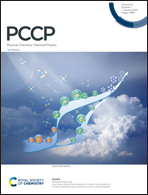A high-performance terahertz absorber based on synthetic-patterned vanadium dioxide metamaterials
Abstract
In this work, we designed a terahertz absorber based on vanadium dioxide (VO2) with tunable and ultra-broadband characteristics. This absorber is composed of four identical synthetic VO2 patterns, a dielectric layer and a metal reflector layer from top to bottom. The designed absorber is found to achieve essentially total reflection when VO2 is in the insulated state. The designed absorber has an absorption bandwidth of over 90% absorptance up to 7.7 THz in the frequency range of 5.36–13.06 THz when VO2 is in the metallic state. By adjusting the conductivity of VO2, the absorber realizes near-perfect modulation of the amplitude with its absorbance dynamically tuned from 4.31% to 100%. The operating principle of the ultra-broadband absorber is interpreted by wave interference theory, impedance matching theory, and electric field analysis. Compared to previously reported terahertz absorbers, the designed absorber offers significant improvements in the absorption broadband, and it also has many advantages such as a simple structure, polarization insensitivity, and a flexible incident angle. These tunable ultra-broadband terahertz absorbers hold great promise in the fields of photochemical energy absorption, thermal emitters, and stealth devices.



 Please wait while we load your content...
Please wait while we load your content...